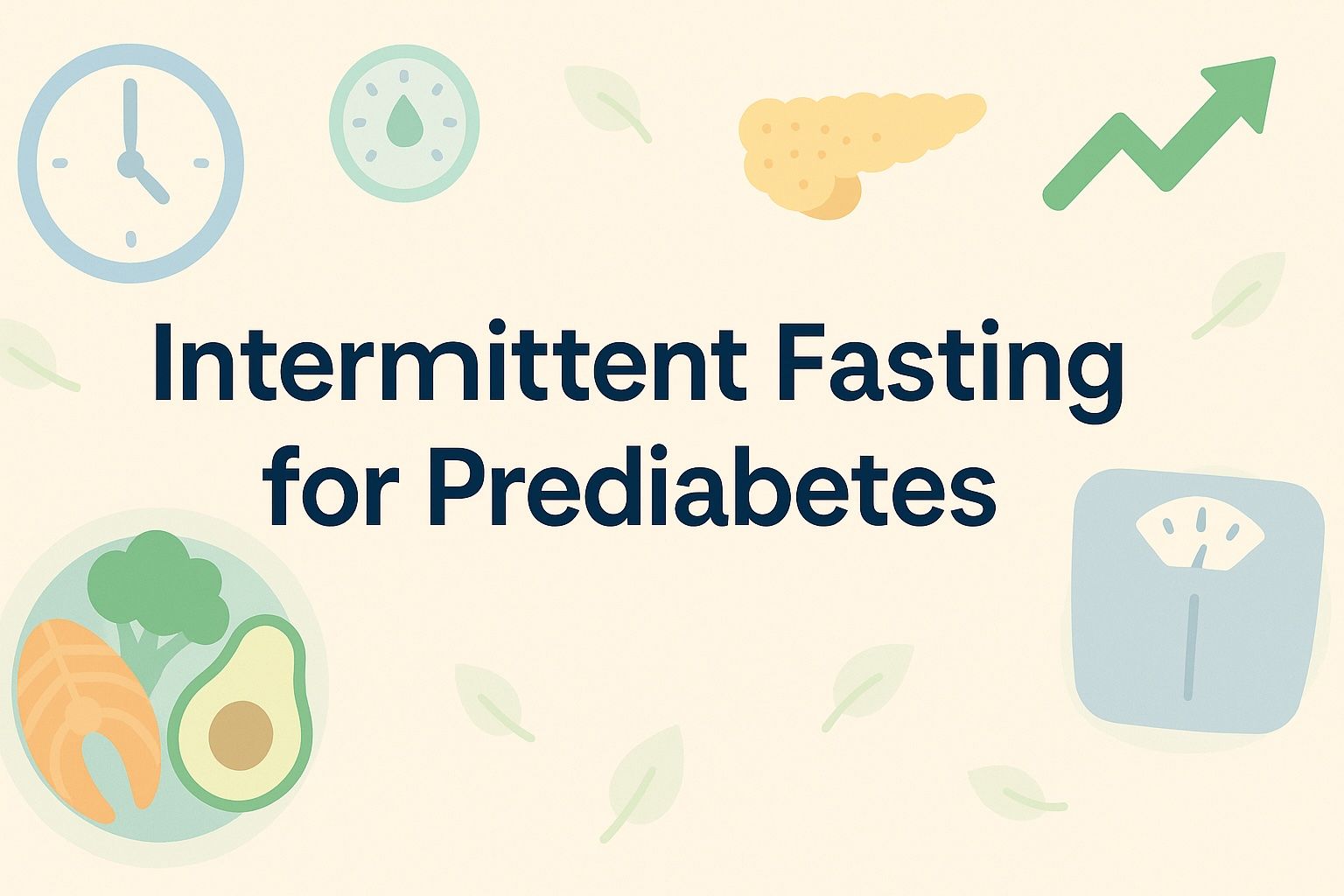Intermittent Fasting for Prediabetes: 2025 Guide to Blood Sugar Control
Published on 8/18/2025 · 📖 3 min read

If you’ve been diagnosed with prediabetes, you may be exploring sustainable ways to manage your blood sugar. One popular approach is intermittent fasting (IF). But what really happens inside your body when you fast, and can IF actually help with prediabetes?
Here’s a science-backed guide with real-world insights, trusted studies, and practical tips.
What Happens in Your Body During Intermittent Fasting?
When you practice intermittent fasting, your body goes through key metabolic shifts that impact blood sugar and insulin resistance:
- Insulin levels decrease
Going without food lowers insulin, giving your pancreas a break and enhancing fat burning.
Source: New England Journal of Medicine - Improved insulin sensitivity
Studies show IF can help your body respond better to insulin, which is vital for prediabetes management.
Source: New England Journal of Medicine - Cellular repair and autophagy
Fasting activates a cellular “clean-up” process, helping reduce inflammation and improve metabolic health.
Source: Cell Metabolism - Energy shift: glucose to fat
During longer fasts, the body transitions from burning glucose to using stored fat, which may reduce insulin resistance and aid in weight control.
Can Intermittent Fasting Help with Prediabetes?
✅ Benefits of IF for Prediabetes
- Clinical studies confirm IF can lower fasting glucose and improve insulin sensitivity.
Source: Diabetes Care - Many prediabetic individuals report:
- Fewer cravings
- Better weight control
- More stable daily energy
⚠️ Downsides to Consider
- Some people may feel weak, shaky, or low on energy, especially in the beginning.
- IF may not be suitable for those prone to hypoglycemia or for some women due to hormonal factors.
Source: Frontiers in Endocrinology - Intermittent fasting only works long term if paired with balanced nutrition.
How to Practice Intermittent Fasting for Prediabetes Safely
- Start with shorter windows: Try 12:12 (12 hours fasting, 12 hours eating) before moving to longer fasts.
- Eat balanced meals: Focus on lean protein, healthy fats, fiber, and non-starchy vegetables to keep glucose stable.
- Use digital tools: Apps like GlucoSpike AI can help you log meals, track carb impact, and get reminders for activity to smooth glucose spikes.
- Adjust based on your body: There’s no single “right” plan—listen to your body and adapt.
Insights from the Prediabetes Community
- Many succeed by eating earlier in the day (e.g., finishing meals by 6 PM).
- Others prefer flexible routines with a focus on meal quality and regular movement instead of strict fasting.
- The best results come from experimentation, self-monitoring, and medical guidance.
Conclusion: Is Intermittent Fasting Right for Prediabetes?
Intermittent fasting provides science-backed benefits for those with prediabetes—including better insulin sensitivity, reduced glucose levels, and easier weight management.
However, it’s not a one-size-fits-all solution. The most effective approach is one you can stick with long term, combining:
- Balanced nutrition
- Regular movement
- Monitoring with tools like GlucoSpike AI
References:
Effects of Intermittent Fasting on Health, Aging, and Disease - New England Journal of Medicine
Effects of Intermittent Fasting on Insulin Sensitivity - Diabetes Care
Fasting, Women & Hormonal Health - Frontiers in Endocrinology
Disclaimer:
This article is for informational purposes only and is not a substitute for professional medical advice. Always consult your healthcare provider before making changes to your diet, fasting routine, or diabetes management plan. Individual results may vary.
 GlucoSpike AI
GlucoSpike AI 

